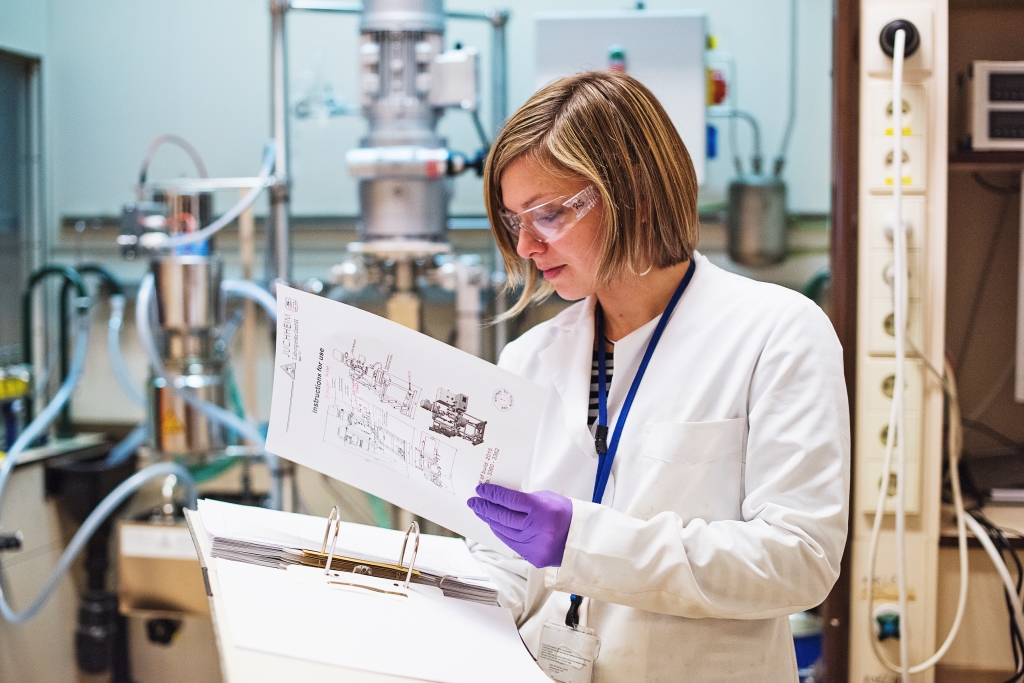The research was part of the ‘Beets to Biopolymers’ project, in which project partners Maastricht University, University of Groningen, Cosun, Philips, and Astron collaborate on making polyamides (nylon) from galactaric acid derivatives (GalX). To this end, unique cyclic monomers are obtained by extraction and chemical modification of sugar beet.
Three aspects were important in this project:
- Socio-economic value: ‘We use second-generation biomass, so in fact residual flows from the sugar industry, which do not compete with food production.’ The production of sugar beet yields just as much sugar per year as beet pulp (both roughly 1 million tons).
- Industrial synthesis: ‘We had to use a synthesis method that could be easily scaled up; previous attempts to make biobased polyamides from sugar beet pulp stranded because they were not industrially relevant. They only worked in the lab with large amounts of solvents. In contrast, the usual industrial synthesis of polyamides from fossil raw materials was not compatible with the production from biomass. For example, adjustment of the process temperature was important to prevent caramelisation of the sugars.’
- Scientific value: ‘We have chosen a particular polymer composition because it has favorable thermal properties and suppresses crystallinity. Because the structures are different than with fossil monomers, however, unexpected consequences also occur. That is why I extensively researched the molecular interactions, thermal stability and the processability of GalX-based polyamides.
Results
Wróblewska’s research yielded polymers that are bio-based for 60% to 100% and have comparable properties as high-end fossil polyamides. Depending on the composition, the biopolymers were highly transparent or semicrystalline and dimensionally stable, also at higher temperatures.
This seems ideal for applications where transparency is required and there are large fluctuations in temperature, such as in water kettles or lampshades. Project partner Astron was looking for possibilities to make radio telescope covers that can be used in Africa, where temperature differences can be dozens of degrees during the day and at night. ‘Unfortunately, these polyamides are not suitable for this because they affect radio waves. Additives can also influence these properties, but further research is needed for the application partners. ‘
Since October this year, Ola Wróblewska has been working in the Polymer Chemistry Research group (PCR) of Professor Filip Du Prez in Ghent, which focuses, among other things, on the development of vitrimers; durable plastics that have a high mechanical and thermal resistance, are chemically stable and can easily be reprocessed, repaired or recycled.
This article was created in coöperation with Source B



